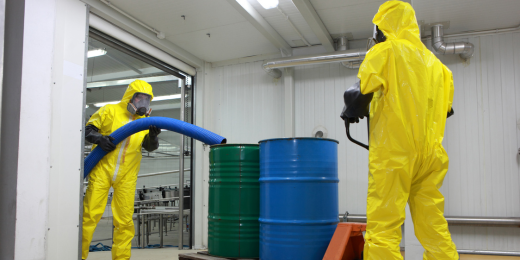Reclaim Waste Can Be Fun For Everyone
Reclaim Waste Can Be Fun For Everyone
Blog Article
Excitement About Reclaim Waste
Table of ContentsThe Main Principles Of Reclaim Waste Reclaim Waste Things To Know Before You BuyIndicators on Reclaim Waste You Should KnowFascination About Reclaim WasteThe Definitive Guide to Reclaim Waste
Explore the kinds, events, and types of liquid waste. Domestic sewage waste refers to the waste and items from a residential sewage-disposal tank. This kind of waste is produced by human beings in homes, institutions, and various other buildings. This only includes septic systems that have a drain area. The appropriate monitoring and disposal of residential sewer waste call for liquid waste to be transferred to a sewer therapy plant where the correct approaches and devices are put on purify and deal with waste.
Business waste commonly includes potential dangers, such as flammable products or a mix of liquid and solid waste items, and needs an advanced and in-depth disposal procedure. The disposal of industrial waste normally includes the purification of waste before transport to ensure safe and appropriate disposal. Industrial waste is developed from results and overflow of commercial processes and manufacturing.
This kind of waste can not make use of the very same sewer management transportation or processes as septic or industrial liquids. The industrial waste administration procedure needs the examination and testing of fluid waste prior to it undergoes the disposal procedure (liquid waste removal melbourne). Runoff waste is the liquid waste that comes from runoff and excess stormwater in highly populated areas or cities
Drainage waste can trigger contamination and flooding if not dealt with correctly. Ensuring correct waste administration can avoid disasters and lower ecological harm.
Reclaim Waste Can Be Fun For Everyone
Get in touch with PROS Services today to discover our waste management and disposal solutions and the correct methods to take care of the fluid waste you produce.
(https://hub.docker.com/u/reclaimwaste1?_gl=1*1980ev1*_ga*MTgwOTc3Nzc2OS4xNzMxMzI1Mzkw*_ga_XJWPQMJYHQ*MTczMTMyNTM5MC4xLjEuMTczMTMyNTcwOC4xMC4wLjA.)This so-called 'wastewater' is not only a vital resource yet, after therapy, will be launched to our land, waterways or the sea. Used water from commodes, showers, baths, cooking area sinks, laundries and commercial processes is understood as wastewater.

water used to cool down equipment or clean plant and devices). Stormwater, a form of wastewater, is drainage that flows from agricultural and city areas such as roofing systems, parks, yards, roadways, paths and seamless gutters into stormwater drains pipes, after rainfall. Stormwater flows unattended directly to regional creeks or rivers, at some point reaching the ocean.
Reclaim Waste Fundamentals Explained
In Queensland, the majority of wastewater is treated at sewer treatment plants. Wastewater is moved from residential or industrial websites through a system of sewage systems and pump terminals, recognized as sewage reticulation, to a sewer therapy plant. Local governments build, preserve and operate most sewage treatment plants. Operators are licensed under the Environmental Protection Act 1994 to discharge treated wastewater at an acceptable environmental standard into waterways.
The Division of Natural Resources advises city governments concerning handling, operating and preserving sewerage systems and treatment plants. In unsewered areas, local governments official source might need owners to install private or home sewer treatment systems to treat domestic wastewater from toilets, kitchens, bathrooms and washings. The Division of Natural Resources authorises making use of house systems when they are confirmed to be reliable.
A lot of stormwater obtains no therapy. In some brand-new communities, therapy of some stormwater to get rid of litter, sand and crushed rock has begun making use of gross contaminant traps. Wastewater therapy happens in 4 stages: Removes strong matter. Bigger solids, such as plastics and other things incorrectly released to drains, are removed when wastewater is travelled through displays.
Makes use of tiny living organisms recognizes as micro-organisms to break down and remove staying liquified wastes and fine particles. Micro-organisms and wastes are integrated in the sludge.
What Does Reclaim Waste Do?
Nutrient removal is not available at all sewage therapy plants because it needs pricey specialized tools. Clear liquid effluent produced after therapy may still consist of disease-causing micro-organisms - liquid waste disposal.

Many wastewater streams right into the sewerage system. Under the Act, local federal governments provide authorizations and licences for environmentally appropriate activities (Ages) involving wastewater launches that might have a neighborhood impact.
See This Report on Reclaim Waste
Monitoring offers accurate information regarding water quality and can confirm that permit problems are being met. The info gotten through monitoring offers the basis for making water high quality choices.
Report this page